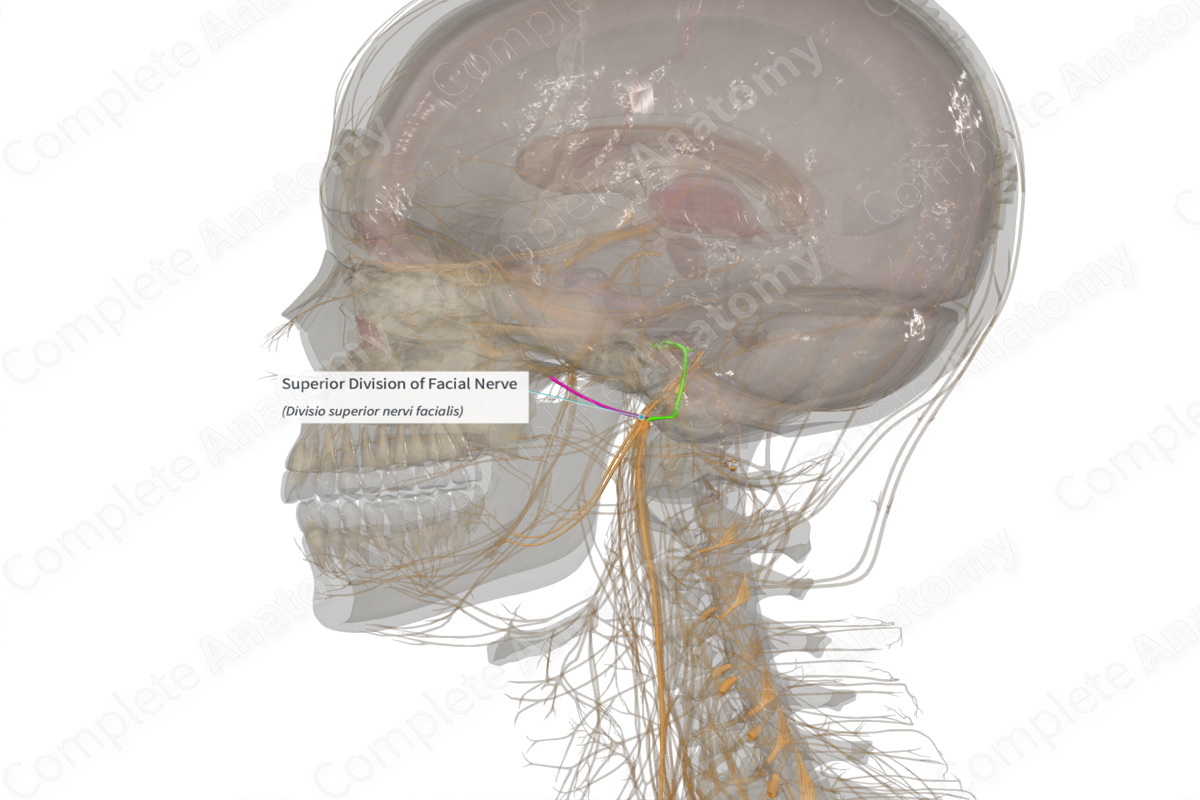
Quick Facts
Origin: Facial nerve.
Course: Runs a short distance anteriorly before dividing.
Branches: Temporal and zygomatic branches.
Supply: Motor innervation to the muscles of facial expression.
Related parts of the anatomy
Origin
The superior division of the facial nerve originates where the main facial nerve trunk splits. This generally occurs lateral to the styloid process, anterior and inferior to the external acoustic meatus.
Course
The superior division of the facial nerve runs anteriorly and superiorly only a short distance before it too divides.
Branches
The superior division of the facial nerve divides to form the temporal and zygomatic branches of the facial nerve.
Supplied Structures
The superior division of the facial nerve is a motor nerve. It sends branchial motor efferent fibers to the muscles of the upper half of the face.
The fibers that run via the temporal branch will innervate the anterior and superior auricular muscles, the frontalis, the corrugator supercilii, procerus, and orbicularis oculi muscles.
The fibers that run via the zygomatic branch will innervate the procerus, orbicularis oculi, levator labii superioris, and levator labii superioris alaeque nasi muscles.
Learn more about this topic from other Elsevier products
Facial Nerve

The facial nerve is the nerve of the second pharyngeal arch and supplies motor innervation to all of the muscles derived from this mesoderm, namely the muscles of facial expression.



